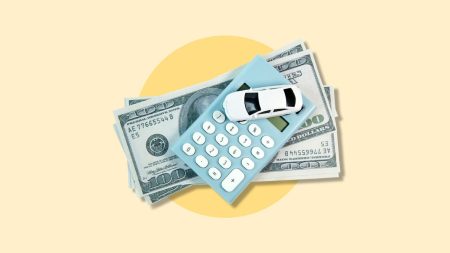Key takeaways
-
Getting a credit card you’ve had before, whether that means reopening your old account or going through a new application for the same card, is possible — but not for every situation.
- Depending on your issuer’s rules overall or even for an individual card, you might not be allowed to get the same card again.
- If you are allowed to get the same card again, including opening a second account for another of the same card, you might not be eligible for certain perks, like welcome bonus offers.
The simple answer in most cases is yes. But, there may be scenarios where it’s not possible or not the best idea.
That all comes down to what your motivation is for wanting the same card again. Do you regret closing it because it was a useful card, or maybe because you’d had it a long time and the history helped your credit score? Or were you trying to earn another welcome bonus offer from the card issuer?
However, sometimes you close a card and then decide you’d like to have it again. If you want a credit you’ve had in the past, here are some important things to consider before you reapply.
Reasons to reopen your credit card account after you’ve closed it
Closing your credit card is often an irreversible decision. However, if you change your mind soon after, you may be able to call the issuer and have them reopen the account — especially if it’s been less than 30 days since you closed the card. Here are a few reasons you might choose to reopen your card.
Preserve your credit history
The length of your credit history has an impact on your credit score. The longer it is, the more positive the effect on your credit. If you close a card and then realize it was the oldest card in your wallet, you may want to call the issuer and see if they can reopen the account and preserve your history.
This is especially true if the card is a no-annual-fee card that isn’t costing you anything to keep around. It doesn’t hurt anything to keep it in a sock drawer and pull it out once every few months for a single purchase just to keep the account active.
Avoid raising your credit utilization ratio
Unless you reduce your spending, closing a card increases your credit utilization since you will lose access to that line of credit. Here’s how that works.
If you have two credit cards, each with a $5,000 limit, you have a total of $10,000 in credit available to you. In that scenario, if you spend $3,000 per month on your cards, you still stay below 30 percent credit utilization, which is the cap most experts recommend for the health of your credit. If, you close one of those cards however, suddenly your available credit drops to $5,000 and spending $3,000 on your credit card puts you at 60 percent credit utilization, which could hurt your credit score.
You might decide to counter this drop in available credit by opening a new credit card. But applying for a new credit card will usually require a hard credit inquiry. If you want to avoid that, but also want access to more credit, you may consider reopening the card you closed. If it hasn’t been too long, your issuer might agree to reopen the account without performing an inquiry.
Try for a second welcome bonus
It’s not uncommon for cardholders to try and earn a card’s welcome bonus again, especially when the bonus is higher now than when they had the card before. In these cases, the application rules vary by issuer. With most issuers, you can open the card again, but you might not be eligible to earn another welcome bonus.
For some credit card issuers, there may be a waiting period before you can receive a bonus on the same card again. That’s why it’s important to always read the fine print on the application and the terms and conditions to see if there are any additional rules surrounding welcome bonus eligibility.
For example
Chase has a 48-month rule on its Sapphire family of cards at the time of writing. This rule, which is stated in the offer details of the Chase Sapphire Preferred® Card and Chase Sapphire Reserve® card, says that the welcome bonus offers are not available to “previous cardmembers of any Sapphire credit card who received a new cardmember bonus within the last 48 months.”
However, don’t assume the same rule applies for every type of Chase credit card. For example, at the time of writing, the Freedom family of cards — including Chase Freedom Flex℠* and Chase Freedom Unlimited® — have different conditions: “This product is not available to either (i) current cardmembers of this credit card, or (ii) previous cardmembers of this credit card who received a new cardmember bonus for this credit card within the last 24 months.”
Meanwhile, many American Express applications have what is known as “lifetime language,” meaning you may not be able to receive the welcome bonus if you’ve ever had that card or a card within the same family.
If you’re trying to get a second welcome offer bonus, make sure you understand the rules your card issuer has before you go through the trouble of reapplying for a credit card.
Reasons you may not be able to get a credit card you’ve had before
Banks frequently change or update their lineup of available cards — a card you’ve had in the past may get discontinued or become no longer available for new applicants. Existing cardholders may be able to keep their accounts after a card is discontinued, but the bank will not make any applications available for anyone else wanting to sign up, even if they’ve had the card in the past.
If the bank closed your account for reasons like inactivity, nonpayment or misusing your account or rewards, you may be barred from applying for that card again.
Can you have two of the same credit card?
With many issuers, yes: It is possible to have two (or sometimes even more) active accounts of the same credit card. Why might you want two of the same card? One reason is to utilize bonus categories with limited spending, like the $25,000 per year limit on office supply purchases on the Chase Ink Business Cash® Credit Card.
If you have a card that provides you with an annual or monthly statement credit, you might like to double up on the number of credits you can get. For example, The Platinum Card® from American Express has statement credits for things like Uber, Saks Fifth Avenue and digital entertainment that you can double up on by having two cards.
Getting two of the same cards can typically happen in two ways: upgrading or downgrading a card, or through a completely new application.
Upgrading or downgrading a card
If you already own two credit cards from the same issuer but from different card families, you might be able to complete a product change to get two of the same cards. For example, let’s say you own the Chase Sapphire Preferred and the Chase Freedom Unlimited. You might be able to change your Chase Sapphire Preferred into another Freedom Unlimited, allowing you to then hold two Freedom Unlimited cards at the same time.
Completing a new application
Some issuers will allow you to apply for the same credit card again even if you already have it — provided that you follow the issuer’s guidance on the topic, as well as their waiting periods, if applicable.
Some issuers only have language about receiving the welcome bonus again and not about getting the actual card again, while others might not want you to do either. For example, applying through targeted offers from American Express might allow you to circumvent their “lifetime language” that we mentioned previously.
Every issuer is different, and these rules can even vary from card to card. So check over your card agreement and any other issuer information that you can find before applying.
Don’t forget about authorized users
If you just want an additional card for the same account, you can typically get one without applying for a new one. Many cards allow you to add authorized users to your account so that you can give cards to your family members or other trusted people.
Anyone who uses an authorized user credit card will have their purchases roll up into your main account. This can be great if you’re trying to reach spending thresholds for bonus points or other perks, but it also means that you’ll have to keep track of spending for more than one person so you don’t max out your card.
Frequently asked questions
The bottom line
It’s not unusual to want a credit card you’ve had in the past. Spending habits change, and you may be in a better position to utilize a strong rewards card or travel card than you were previously. Or perhaps the bank has added useful perks and benefits that weren’t available when you last had the card.
Be sure to check the application’s terms and conditions before you apply for a card you’ve had before. This can help you gauge your potential for approval and keep you from wasting a hard inquiry on your credit report if the issuer rules prevent you from getting the card again — or from getting a second welcome bonus.
The information about the Chase Freedom Flex℠ Credit Card has been collected independently by Bankrate. The card details have not been reviewed or approved by the issuer.
Read the full article here









